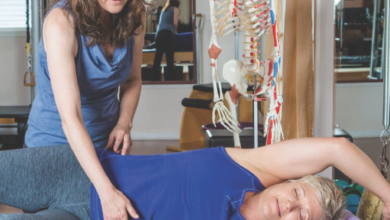Anxiety & Stress: It’s Not All in Your Head
Anyone who has worked with me knows that how we breathe is the foundation from which all forward progress flows. Since your lungs work day and night to keep you alive whether you’re paying attention or not, you may not realize the impact those 20,000+ breaths per day can have on postural alignment. In a nutshell, every time you breathe in, your diaphragm contracts and pulls downward. At the same time, the intercostal muscles between your ribs work to enlarge the chest cavity to maximize your ability to take in air. The goal is to get breath into your posterior mediastinum (a fancy way of referring to the space between your heart and lungs). The problem is many people, especially those experiencing low back and neck pain, have restrictions in this area prohibiting optimal breathing function.
Ideally, the diaphragm retains a dome shape, however, when we get stressed out or articulation of the ribs and diaphragm are limited, this dome-shaped muscle flattens out. This position keeps us in a perpetual state of anxiety and stress. We often think of stressful, anxious thoughts as originating in our minds, but it can also be somatic/postural issues that can be addressed with simple exercises to improve breathing function. If you’re ready to address stress, anxiety, low back or neck pain by learning to breathe properly, we’re here to help.
Call 541-535-7019 for more information or to schedule a free consultation. If in-person appointments don’t work for you, the new online Movement Studio membership is now available. For only $25 per month, you can access weekly live classes and recorded content on-demand from the online portal at any time day or night. Visit our website to sign-up.
It’s literally never been easier to reduce chronic pain and gain strength. If you’re ready to move with freedom, we’re here to provide the resources you need to do the things you love. Call us to schedule an appointment or visit https://themovementstudio.net/ to learn how we can work together to address what’s really causing the problem.

